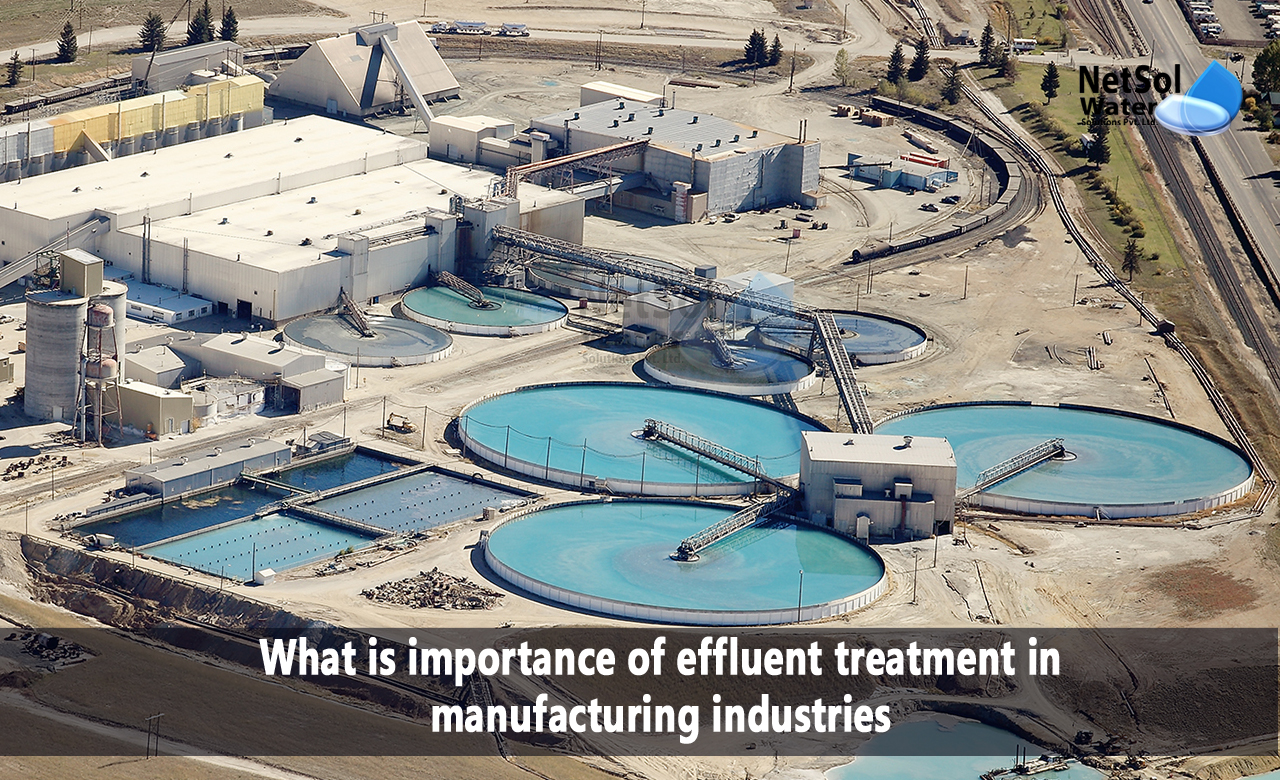What is importance of effluent treatment in manufacturing industries?
Effluent is the wastewater that exits a production or a manufacturing facility or an industrial outfall. Before being released into the sea, rivers, or streams, effluent must be treated to minimize harm to the environment, wildlife, and public health.
Municipalities and manufacturing industries are responsible and accountable, for properly handling their effluent.
Let’s understand the importance of effluent treatment in manufacturing industries!
Many industrial sectors, including those in the textile, pharmaceutical, chemical, and tannery industries, etc. produce effluent. Water that has been contaminated cannot be released, since it contains both dangerous and poisonous chemicals.
Releasing it could result in the contamination of nearby natural water sources, and have an impact on the ecosystem. Effluent treatment plants or ETPs are consequently installed in manufacturing or production industries, with high levels of pollution levels.
What purposes do ETPs serve in manufacturing industries?
The removal of excessive amounts of natural compounds, debris, filth, grit, pollution, dangerous, non-poisonous substances, and polymers, among other things, is done at effluent treatment plants (ETPs).
For chemical processing and wastewater remediation, the ETP uses evaporation and drying techniques as well as several auxiliary techniques, like centrifuging and filtering.
Operation of ETP in manufacturing industries
1. Screen Chamber: This chamber eliminates particularly trash or garbage, to prevent mechanical device abrasion and hydraulic system blockage.
2. Collection Tank: After being pumped to the equalization tank, the series tank collects the wastewater from the screening chamber.
3. Equalization Tank: In an equalization tank, effluents are stored for up to eight to twelve hours, ensuring internal homogeneous blending of effluents and aiding in neutralization.
Continuous blending also prevents sediments from settling inside the equalization tank. It also reduces TSS and SS.
4. Coagulants are added to the effluents using a flash mixer:
· Lime: (800-1000 ppm) to maintain pH accuracy up to 8–9.
· Alum: (200-300 ppm) is used to remove color.
· To resolve the suspended issues and reduce the levels of SS and TSS, add polyelectrolyte (0.2 ppm).
The inclusion of the aforementioned chemicals through green swift blending, enables the production of micro flocs from a homogeneous mixture of flocculates.
5. Clariflocculator: Using a stirrer, the water in the clariflocculator is continually churned. Macro flocs form as a result of the flocculation's slow blending, and settle inside the clarifier zone. Overflowing water is emptied into the aeration tank.
The SS and TSS are reduced as a result of the stable debris accumulating independently, during settlement. Sludge, commonly referred to as settled solids is pumped into sludge drying beds.
6. Aeration Tank: After rationalization, the effluent is directed to an aeration tank for treatment. This tank has air blowers or diffusers installed, which are used to push air through the tank.
This air is necessary to maintain the level of dissolved oxygen (DO) needed for microorganisms to grow, and eliminate BOD and COD through matter breakdown. The effluent's BOD and COD readings are lowered by up to 90%.
7. Secondary Clarifier: The secondary clarifier, where steady liquid separation occurs, receives the aeration tank overflow. The organic sludge produced by the secondary clarifier's settling solids, is transported to a series tank for further treatment after being recycled, into the aeration tank to maintain the MLSS level. If the exit water quality is within acceptable limits, it is checked.
8. Sludge thickener: 60% water and 40% solids make up the input sludge. A centrifuge is used to process the effluent. The separation of the beverages and solids is accomplished by centrifugal force.
The effluent's water content is decreased by the sludge thickener to 40% water + 60% solids. After further processing, the sludge is collected at the bottom of the tank.
9. Drying Beds: To further reduce the water content, primary and secondary sludge is dried in the drying beds.
How can we assist?
Netsol Water provides the newest technology ETPs to treat effluent from the manufacturing industries, which complies with established industrial standards.
We are one of the most affordable businesses dedicated to protecting water resources. To discuss your needs, contact us at 9650608473, or send an email to enquiry@netsolwater.com with your inquiry.



